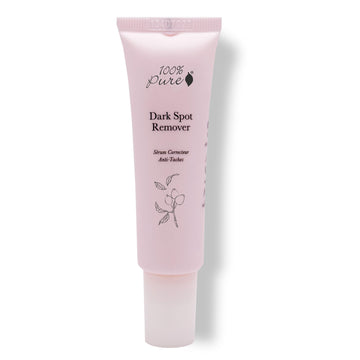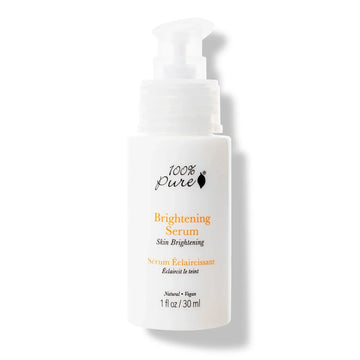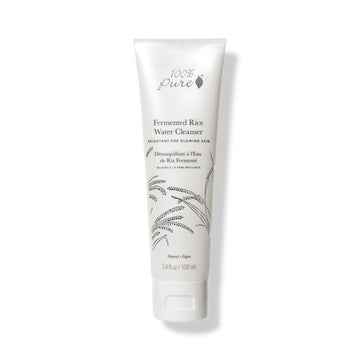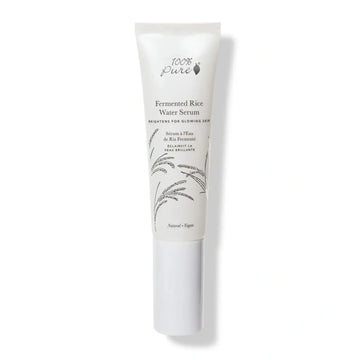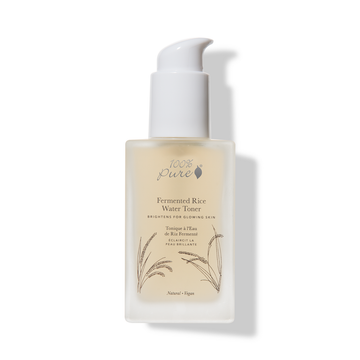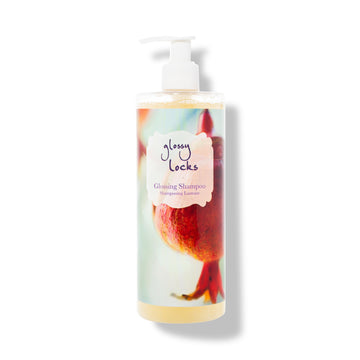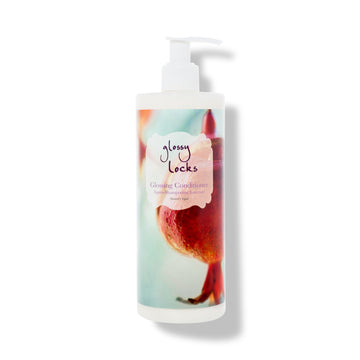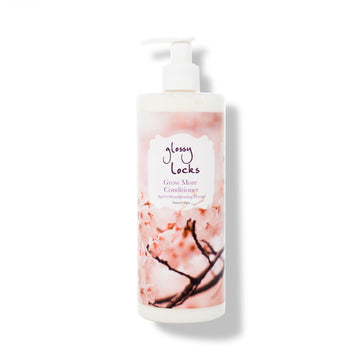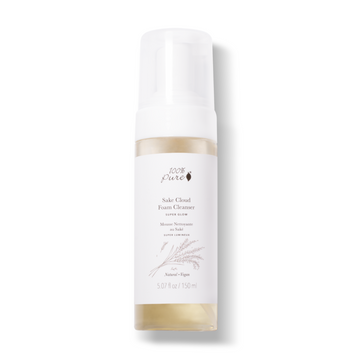Get the breakdown on how fermented rice can brighten and beautify skin -- we even visited a sake factory to get the lowdown on the science and history of this wonder ingredient!
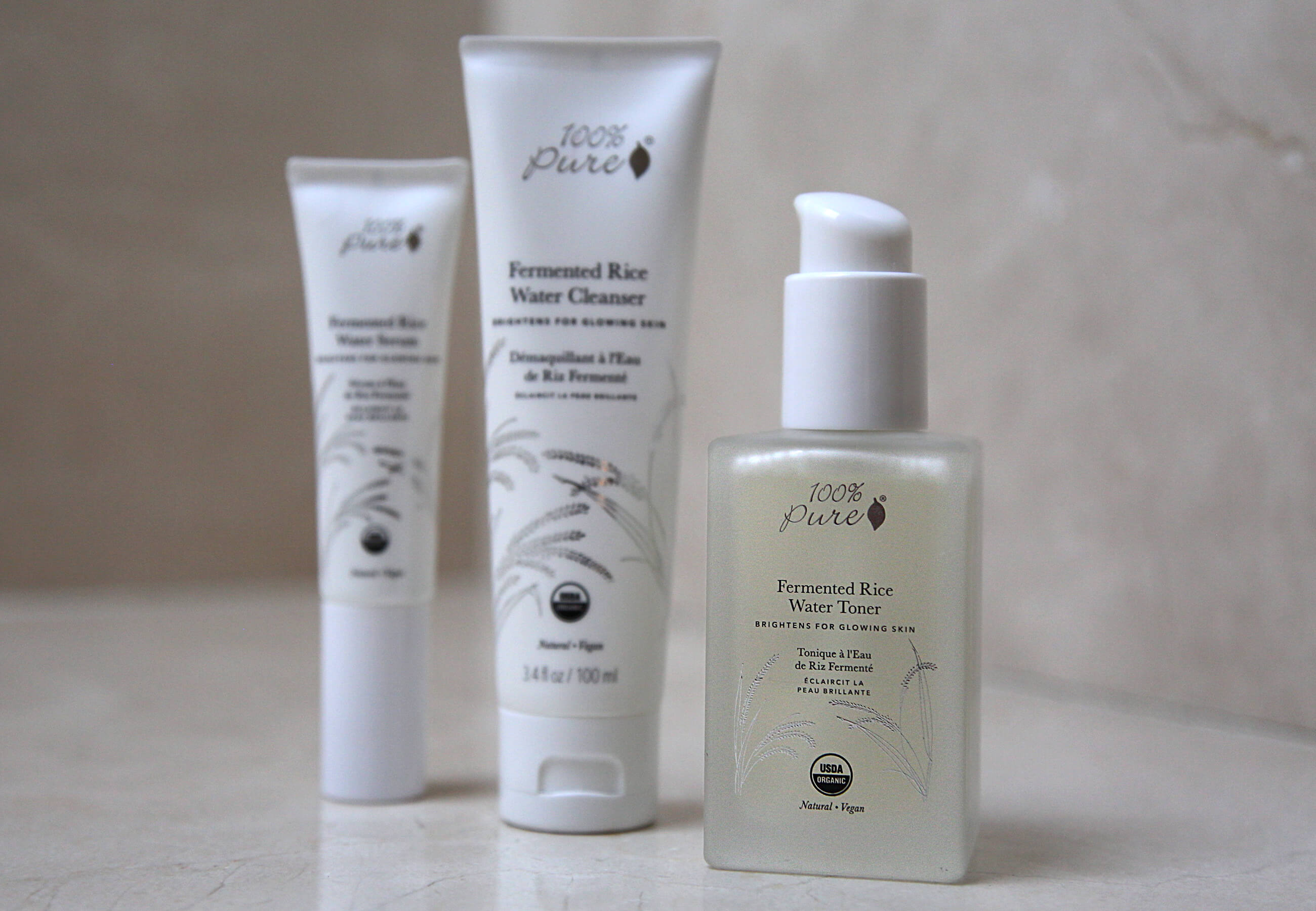
During your search for natural skin care products, you probably never thought the answer was sitting on your kitchen shelf. Tiny white grains have been sitting in a bag, hiding secret skincare benefits. Rice itself is full of vitamins, amino acids, and minerals that can brighten, tighten, and soften your skin, and once converted into rice water these benefits remain intact. Rice can be fermented using koji mold, which contains kojic acid; this acid provides many cosmetic benefits to be enjoyed by your skin. Rice is an all-natural food source that provides many advantages to your health, and we’ll be taking an in-depth dive into how this humble, cultivated grass can be incorporated into your natural skin care routine.
Introducing our new Sake Cloud Foam Cleanser
Suffering from dull skin? This skin brightening Sake Cloud Foam Cleanser is made in a base of saké (fermented rice water), loaded with tyrosinase inhibitors like kojic acid (derived from saké), alpha arbutin (from bearberry) and licorice to prevent and brighten dark spots, even skin tone and leave the complexion with a healthy glow while hyaluronic acid and lavender hydrosol soothes and hydrates. Say hello to brightened and rejuvenated skin!
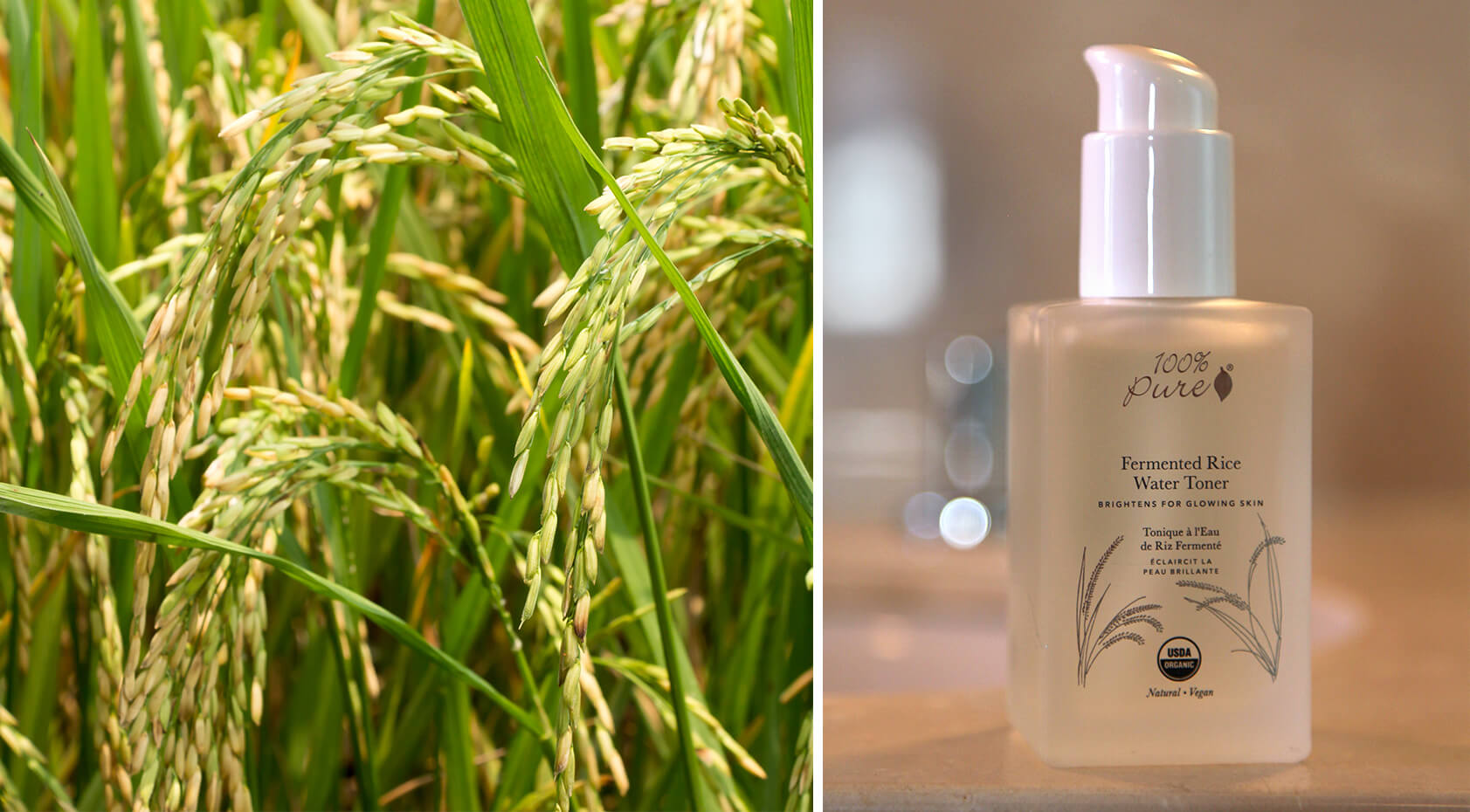
Sake can provide many positive benefits for your skin, such as evening your complexion’s appearance, gentle cleansing, reducing the blemishes of sun and age spots, helping to minimize signs of aging by lessening free radicals, brighter and tighter skin, and helping to soothe the inflammation from eczema and acne. That’s just to name a few! If you’re just starting out in the world of natural skincare, or are looking for a new skincare routine, we’ve got you covered on how to add sake to your daily natural skincare regime and how kojic acid can work for your skin care needs.
In addition to our original products made with fermented rice, we’ve created an all new toner, serum, and cleanser for a complete skin rejuvenating routine. These advanced brightening formulas can be used safely day or night, to balance and even skin pigmentation. They’re made with matsutake mushroom, white mulberry, and licorice to regulate melanin production, resulting in reduction and prevention of dark spots. The slightly acidic pH levels created during the rice fermentation process support cell regeneration, minimized pores, and brighter skin. We’ve added natural fruit brighteners like papaya and pineapple for their enhanced enzyme activity, which gently break down keratin protein in skin’s top layer, where most dead skin cells tend to hang out until they’ve been broken down or buffed away. Dead skin cells result in dark, dry spots and lackluster skin -- no thank you!
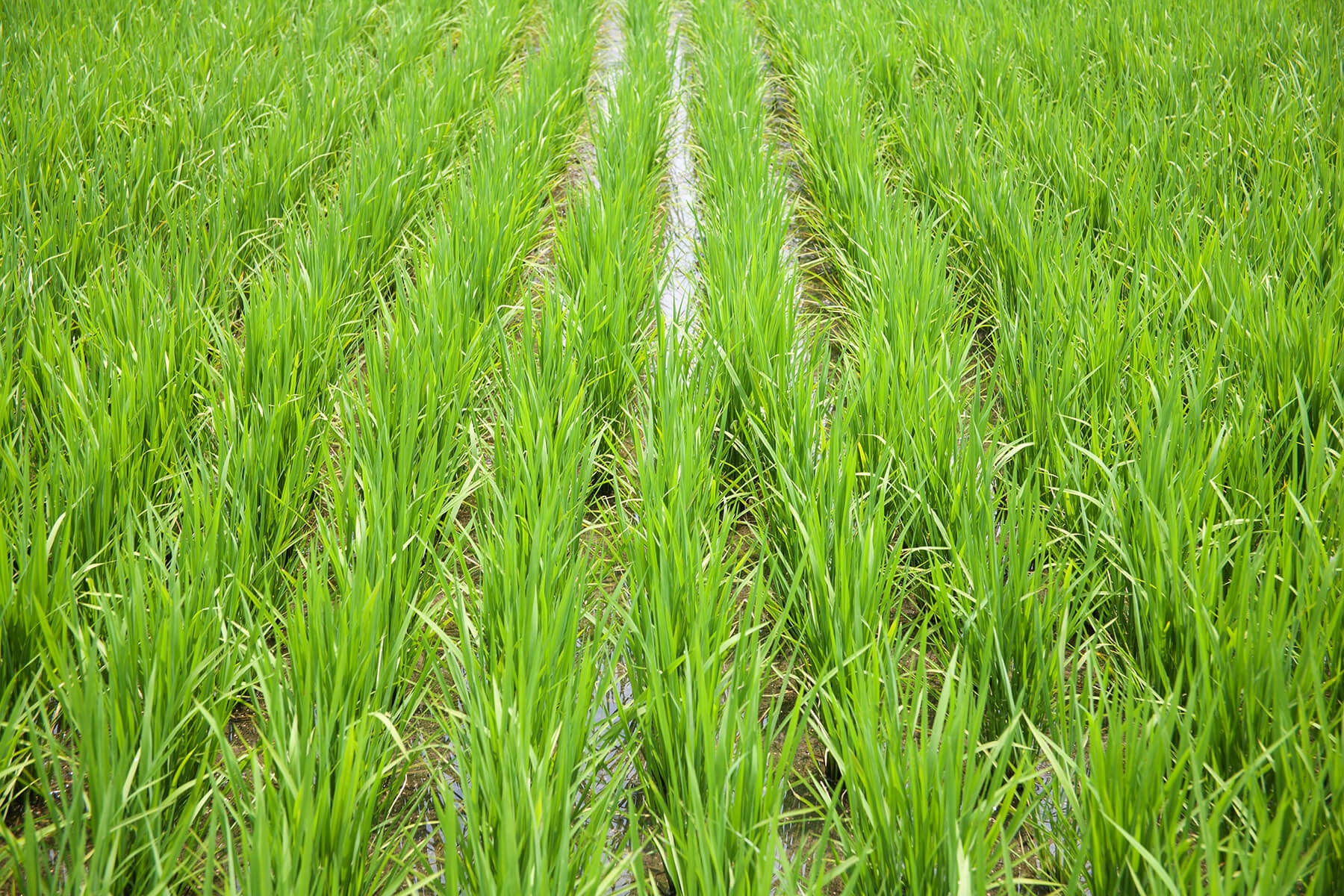
How is Rice Grown?
We may be a little biased but the stats back it up...California is one of the world’s most advanced rice producing areas. We’ve blended old farming traditions with Silicon Valley’s brightest and most cutting edge technology to create higher producing fields all with lower energy and water usage.
The life cycle of rice begins in early Spring (usually around March) when farmers are busy preparing their fields for planting. The first step is to make sure the fields are completely level; this is where precision technology comes into play with the use of GPS and laser-guided grading equipment. Gone are the days of eyeing or guessing on agricultural row spacing! They’re mastering planting down to the millimeter, so no space is wasted and each plant has the ideal growing area. Perfectly level rice fields are essential for conserving water. With this step complete, it’s on to mechanically adding shallow trenches to prep for planting in April. Are you picturing someone behind a large machine spitting rice seeds into the fields? Think again! It’s an airplane pilot cruising above the fields, zipping around at 100 mph, dropping seeds below. Yes, the fields are planted from the air! The heavy seeds sink straight into the precise trenches and start their life cycle underwater.
Rice fields are only flooded to a depth of 5 inches. This flood level has been proven to give the rice plant the best shot at competing against weeds, optimal nutrient and sunlight absorption, and reducing the need for herbicides. It will take about 4 to 5 months for a rice seedling to mature. Rice, like bamboo, is a rapidly growing grass that will reach about 3 feet in height. While growing, farmers are continually checking the flood levels to keep it at the prime level. When late summer rolls around, the grains begin to peek out of the plant, just about ready to be harvested. In California, September is the ideal time for rice maturity and the grain heads are at their peak. Remember those stats we were bragging about? On average, one acre will yield over 8,000 pounds of rice. That’s a lot of future sake and sushi! Did you know that California rice is used in just about every sushi roll made in America?
How is Sake Made and What is Fermentation?
We’re traveling back to 19th century Japan to give you a glimpse of the labor and time-intensive sake making process, because it’s always good to take a step back to see where we were to understand and appreciate how far we’ve come. Fermentation involves the metabolic process where sugars convert into an acid or alcohol, using bacteria or yeast. This conversion concentrates all of the rice’s skincare assets, and breaks large molecules down, which makes it easier for your skin to absorb.
Step One: Washing and Soaking When the rice first arrived (remember this is 19th century practices), the first stage was to wash the rice via foot stomping in large tubs called Fumioke. The washed rice was transferred into Kakimasu, a large wooden tub, where it would soak for a precise amount of time. The soaking would help heat to penetrate rice during the steaming process, and also accelerate the speed of starch to glucose conversion.
Step Two: Steaming After steaming in Koshiki for 50-60 minutes, the rice continues on its journey to becoming sake.
Step Three: Adding Koji Mold The rice is allowed to cool down from the steaming process and is mixed with Koji (mold) in wooden trays aptly named Kojibuta. Koji mold’s scientific name is Aspergillus Oryzae and is critical to the sake making process. This addition creates enzymes which break down the starch in the rice and converts it into sugar. As the Koji mold grows, the process produces heat. In order to control the temperature inside the rice, workers make sure to rotate from top to bottom to keep the ideal temperature. This fermentation process may seem similar to most alcohol producing processes, but using koji mold is in fact unique to sake making. Without this unassuming addition, sake production would not be possible.
Step Four: Starter Making Next, the Koji rice and water are mixed together to form a mash; Yamaoroshi. The two ingredients are blended together until they reach an optimal paste-like consistency. The mash is moved into the Dankidaru, which is a sealed hot water bucket, to help keep the mixture warm, aiding in the fermentation process.
Step Five: Final Making Mix, mix, and mix some more is what this stage of the sake production process is all about. The swirling and stirring of the slurry helps further accelerate the brewing process. This final stage is also where more rice and water is added to the final mash, and when the mash has reached its ideal alcohol point and fermentation, it’s taken out to be filtered.
Step Six: Pressing and Filtering The Moromi (mash) is poured into heavy, long cotton sacks to be pressed in Sakafune, meaning “sake boat.” The filtered sake is called raw sake or new sake.
Step Seven: Pasteurizing After settling for about 10 days, the sake then moves to be pasteurized between 65-70 degrees Celsius.
Step Eight: Aging and Bottling The final liquid is bottled in an airtight container and set aside for aging.
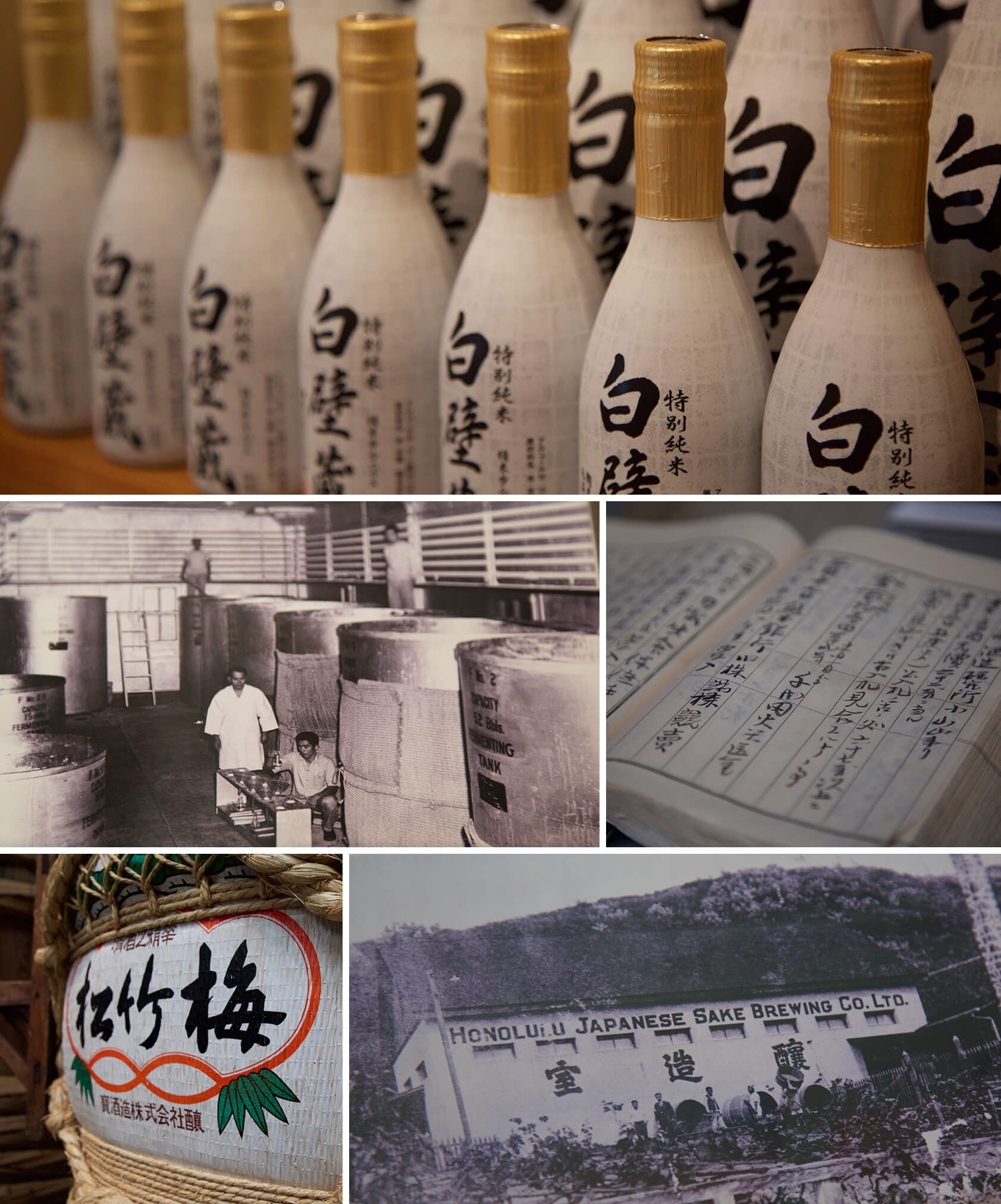
Takara Sake USA was established in Berkeley, California in 1982 but the traditions and knowledge of fermentation started much earlier by original founder, Mr. Unosuke Yomo, back in 1841 in Fushimi, Kyoto. When expanding their business and expertise in sake brewing to the United States, Berkeley, California proved to be the perfect location because of the proximity to the Sierra Nevada Mountains (used for its pure snow melt) as well as the fertile Sacramento Valley (used for its superior rice production).
Takara has been producing Shochu, Mirin, and Sake for over one and a half centuries. Their focus has always been mastering the natural process of fermentation and working with the natural environment, dedicated to preservation and sustainability. Takara’s self-proclaimed “Harmonist” attitude has been incorporated deep within their corporate culture through promoting a healthy lifestyle for each of their members.
By 1990, just 8 years after starting their new venture in Berkeley, Takara had become America’s largest sake producer. The art of sake production is a complex and delicate process which requires both precision and control. Centuries of brewing knowledge and tradition have been transformed into modern technology; we took a lap around the sake museum to learn the humble roots of sake production and how it has flourished into the modern Takara factory process we know and see today.
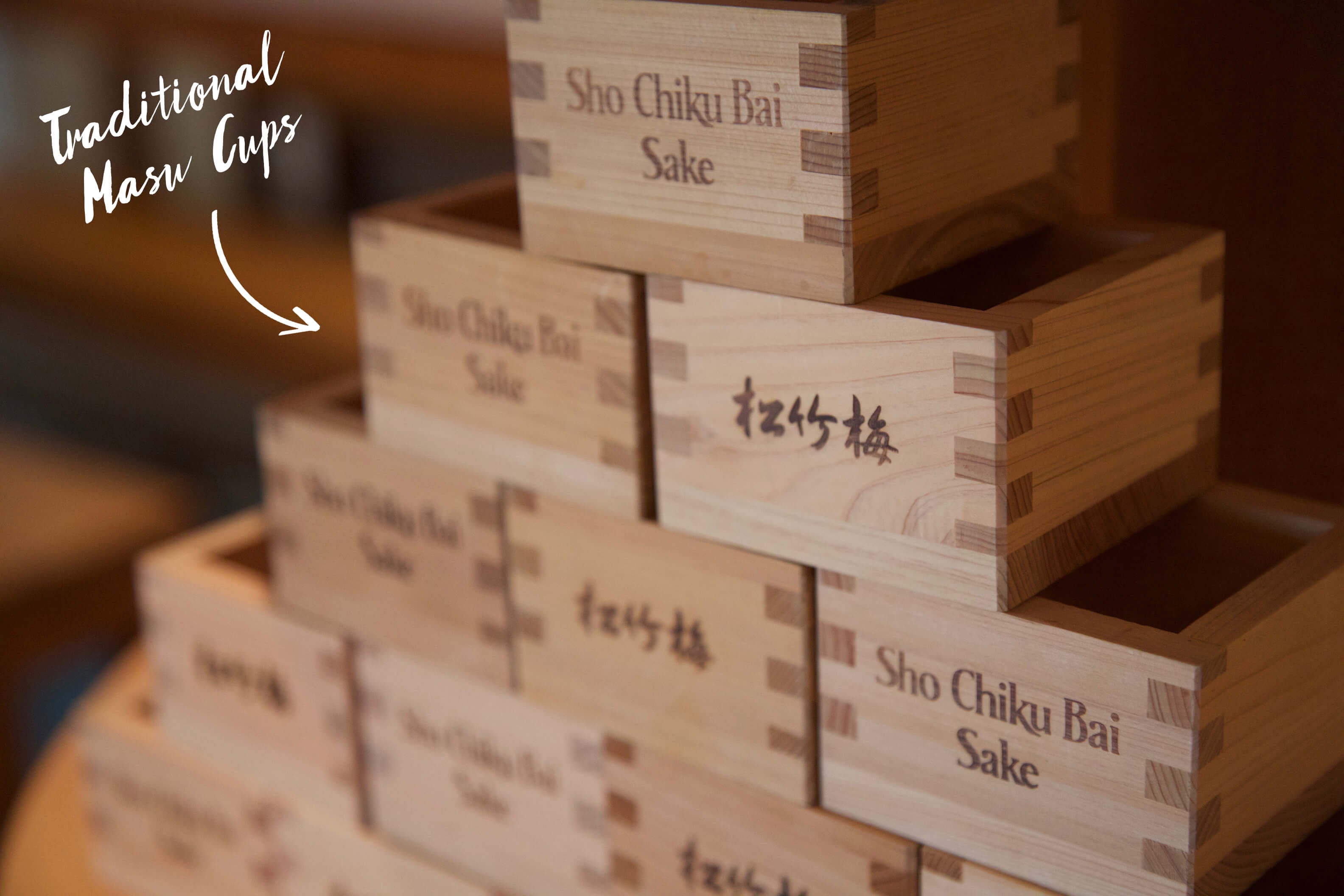
After learning the full process of ancient sake production, it’s hard to not to step back and appreciate the labor intensive process involved in producing one tiny cup of sake. The last step-- in our opinion, the best step-- is enjoying the sake. And what better way to pay tribute to the past and present sake makers than learning about each type produced by Takara in their stunning sake tasting room.
The Tasting Room is a light and airy interior where traditional Japanese structures are blended with modern, sustainable design. The blue glass floor tile is inspired by Japan’s rice paddies and contains recycled glass from sake, beer, and whiskey bottles. Their contemporary space was built with reclaimed lumber, in keeping with their commitment to conservation. Whether you are an avid sake drinker or just getting into this fine brew, Takara has every type of sake for your discerning palate.
PRO TIP: The tasting room is open during the week and weekends, but if you aren’t able to make it during the week, we strongly encourage you to take the extra minute to make a reservation. The sake tasting is not to be missed!
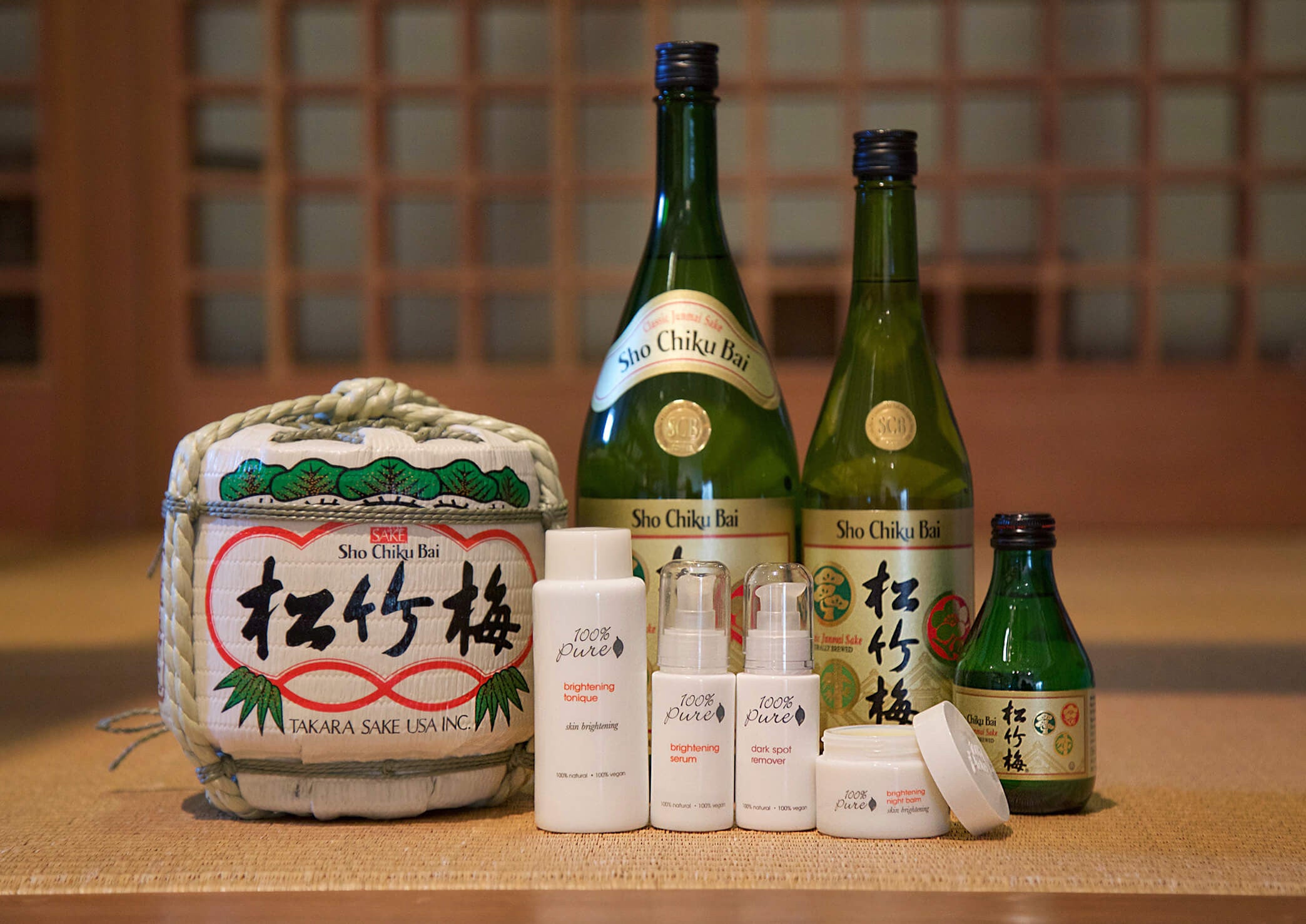
History of Sake in Natural Skin Care
Sake is undoubtedly the national drink of Japan (alongside Matcha), but did you know that sake also has a deep-rooted history in skin care? Fun fact - Koji mold, aka that mold containing skin-pampering kojic acid, is the national mold of Japan! The process of making sake dates back to about the third century AD. Even way back when, the skin beneficial properties of rice were obvious. It’s no folklore that sake producers were known for having the most beautiful and softest skin in town. The Western beauty world is just catching up to sake’s brightening and softening powers, but we’re here to help you get on the sake band wagon and incorporate sake into your daily skincare routine.
Sake in a Facial Cleanser and Toner
Do you ever feel like your skin’s looking a little dull? If you’re wanting to give your skin a brightening boost, we recommend incorporating sake infused products into your daily skin routine. Our top choices for you to try are our Fermented Rice Water line: Cleanser, Toner and Serum and our Brand New Sake Cloud Foam Cleanser
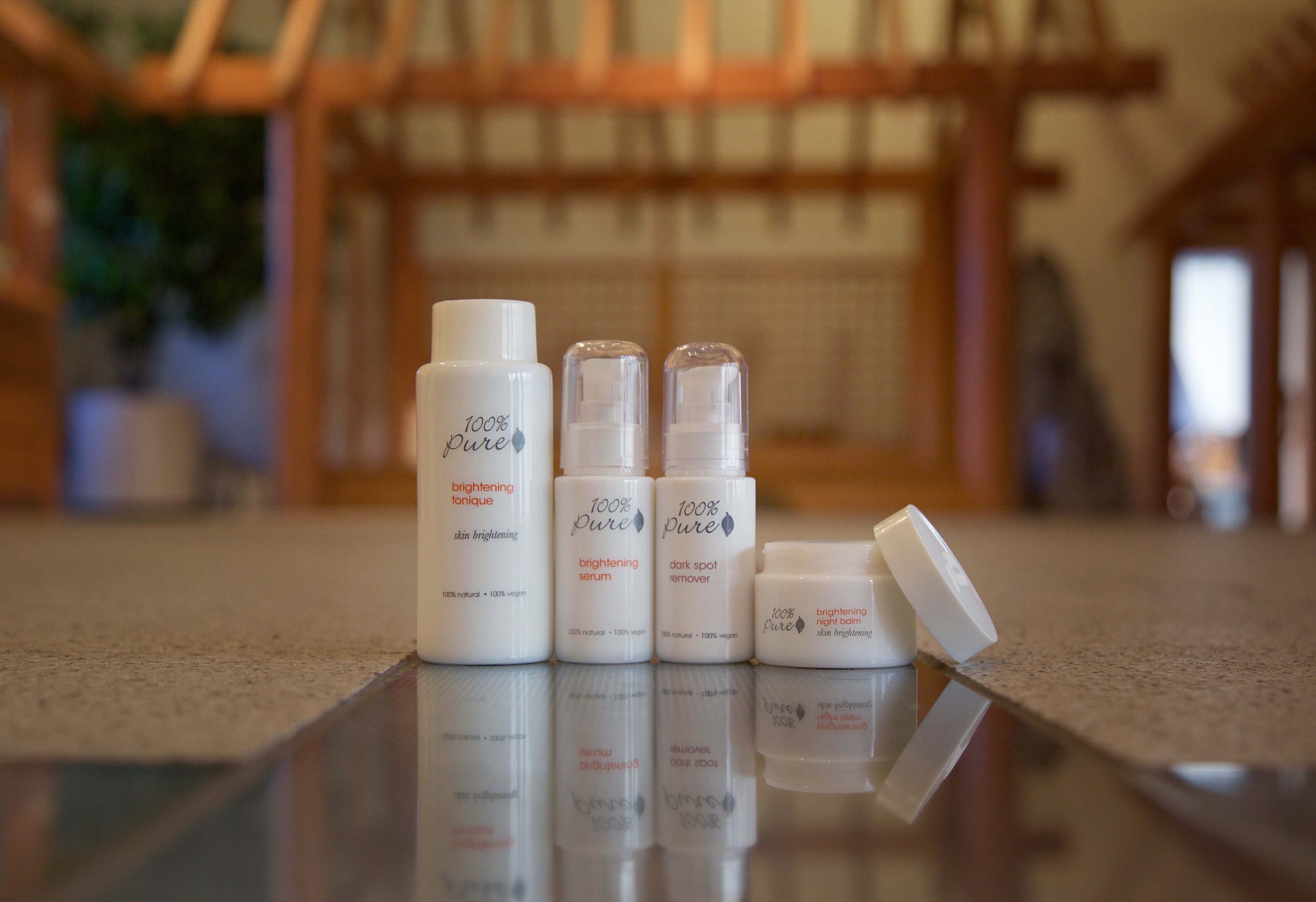
For Brightening Complexion and Skin Tone
Did you know that Kojic Acid is the natural by-product of the sake fermentation process? It’s very similar to a natural bleaching agent, which is why we’ve included it in our Skin Brightening Collection. If you’ve had a bad past experience with harsh chemical skin lighteners, we can definitely understand your reluctance to try another skin brightening serum or skin brightening scrub. But rest assured that our products are totally gentle and effective, considering they’re from plant-based sources. You’ll be able to achieve the same brightening effects from our natural ingredients like lemon juice, sake, and bearberry instead of exposing your delicate dermis to harsh, toxic chemicals.
Sake For Acne
Skincare products that contain sake are excellent for acne because they help to tightens your pores. Acting as a natural astringent, it can help reduce inflammation and redness of severe acne as well as reduce appearance and size of pores. When using fermented rice, or sake, make sure you wear sunscreen. The fermentation process increases the rice’s acidity, and this can lead to sun sensitivity. Enjoy your new healthy-looking skin with the power of rice!
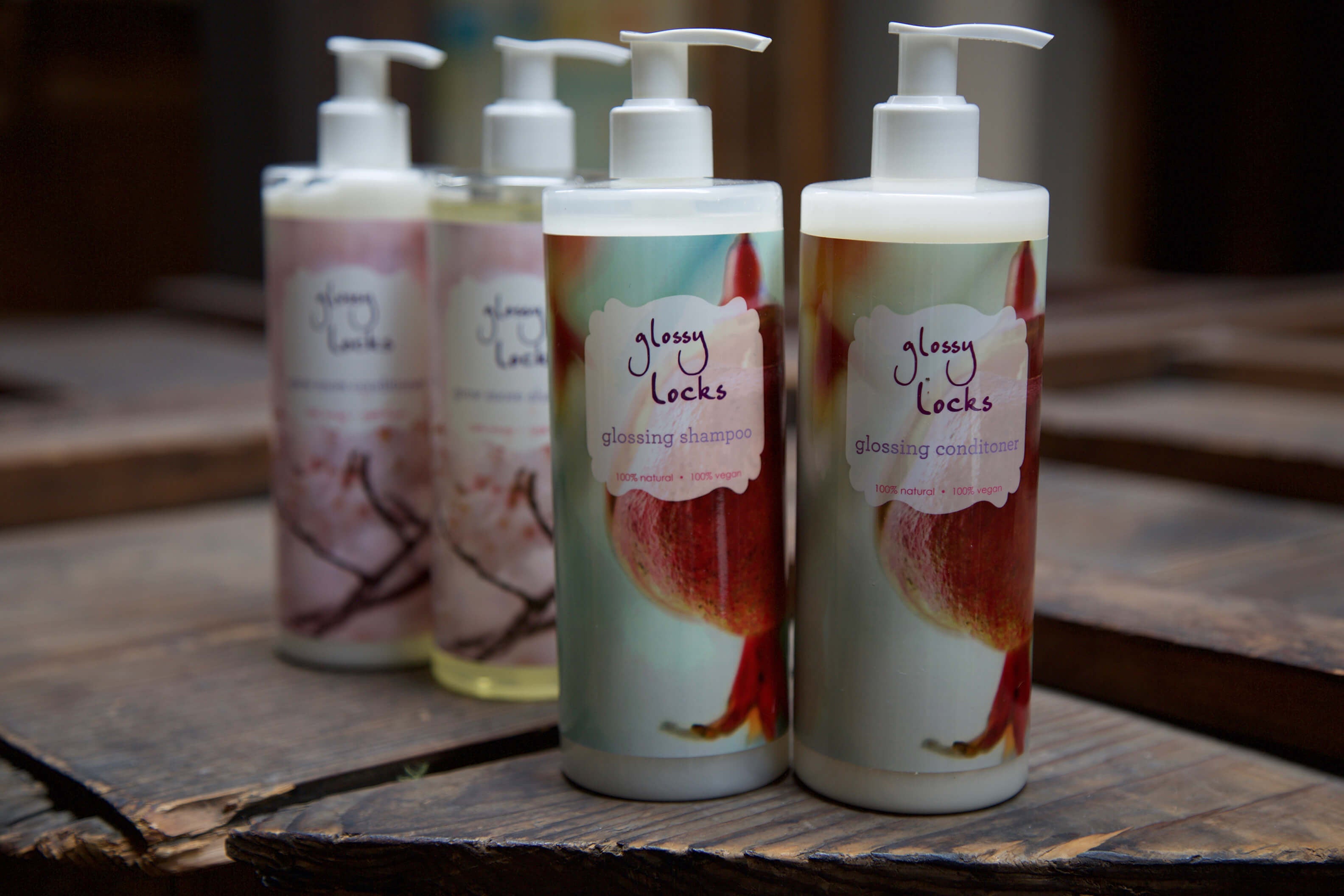
Sake in Hair Care Sake has even been infused in some our our natural hair care products. Our Grow More Conditioner and Grow More Shampoo were specially formulated to help clean your hair follicles of oily buildup, which is one of the leading factors of hair loss. When hair follicles are clogged, they eventually die and won’t grow back again. The Grow More Collection is focused on two major parts: clearing clogged pores of oil and stimulating blood and oxygen flow so your hair can thrive and be it’s most healthy self. Sake is the perfect answer since it’s very effective for clarifying pores, while other ingredients such as caffeine and mint help to stimulate blood flow and oxygen to enhance hair growth.
What sets our formulas apart from other brands is that we use a proprietary delivery system to bring specific ingredients to different parts of your hair. Active ingredients are spun into smaller molecular size to be delivered directly to the cortex, while other moisturizing ingredients are spun to a molecular size in order to keep it on the cuticle for optimal nourishment. Our Glossing Shampoo and Glossing Conditioner also contains sake, our hero ingredient, along with other superstar ingredients (such as sea buckthorn oil and cucumber) to focus on adding hydration and strength for a brilliant shine. We’ve adding in Vitamin B complex to help prevent any future breakage or thinning, all while sealing the cuticle to ensure that moisture and much needed hydration aren’t lost.
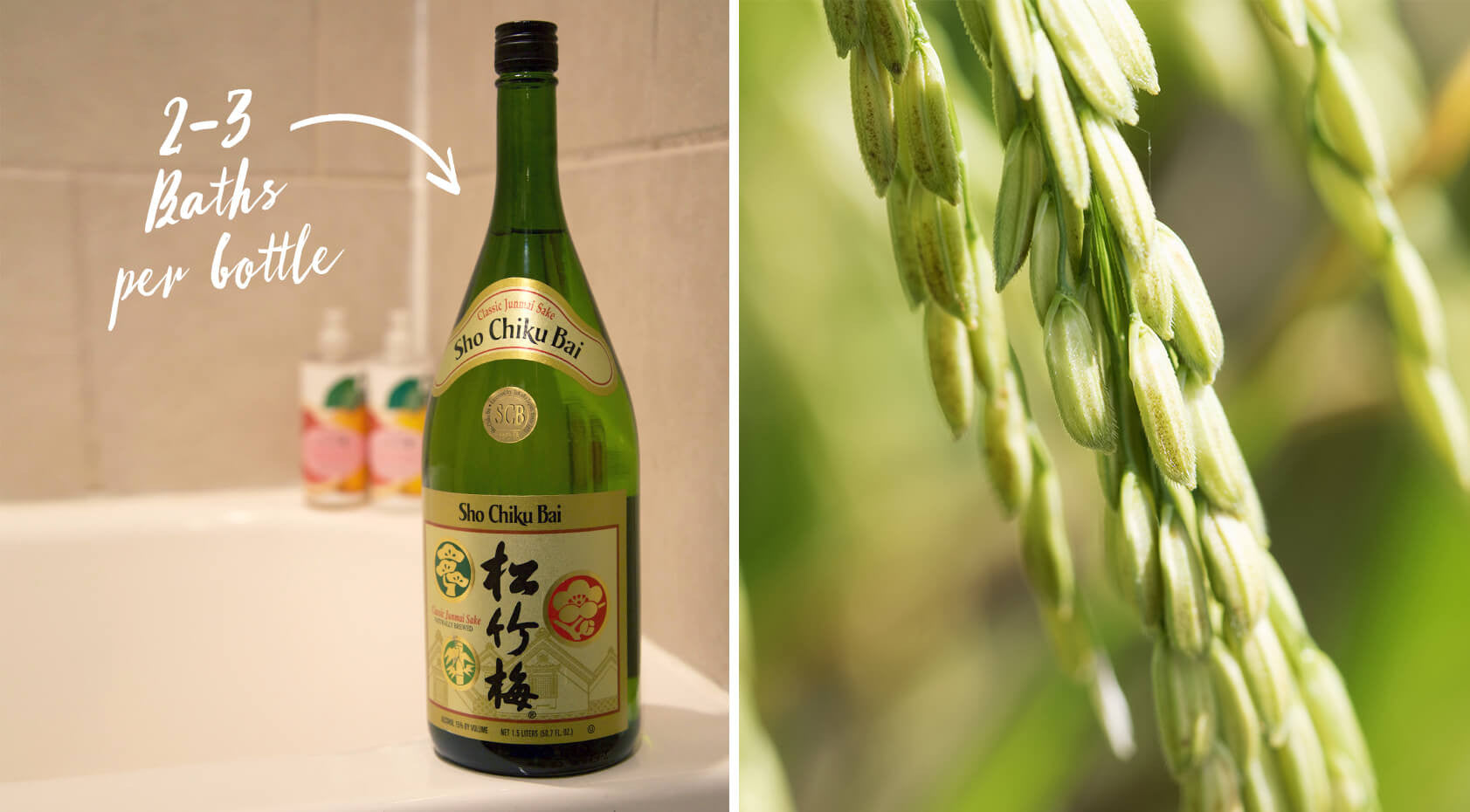
You may have guessed by now that we’re all about self care, and the possibilities for pampering don’t stop in the wonderful world of sake and skin care. Why not indulge in a ‘little one for me, two for the bath’ situation? We are fully on-board with having your sake and bathing in it, too. Here is the perfect DIY sake bath recipe that requires little effort for maximum relaxation.
Ingredients Hot Bath Water 24 ounces of Sake
Directions Draw a hot bath for yourself. Grab an extra sake cup (for the leftover sake). Pour 24 ounces of your favorite sake into the bath. Give a gentle stir, then get in for some serious soaking. Drink leftover sake as needed.
Top 5 Benefits of Sake in Skin Care
It’s a Natural Ingredient There are many harsh chemicals in skin care that can help you lighten your complexion... but why would you sacrifice health or wellness when there are readily available, natural alternatives? Sake, or fermented rice, is the perfect addition to your natural skin care routine with the same effectiveness.
Moisturizes Sake often added to skin care products because of its high glycerol and amino acid content. These elements help to prevent moisture from evaporating from your skin, which can lead to excess dryness and loss of hydration. Which is why we are all for soaking (and sipping) in our DIY sake bath for extra hydrated skin all over.
Lightens The power of sake can help alleviate the signs of sun spots, age spots, and freckles. Put (fermented rice) kojic acid to work on your face to safely inhibit melanin production when applied.
Anti-Aging Sake is a multi-tasking ingredient addition, especially with ferulic acid, a natural compound known to have anti-aging effects. The ferulic acid acts as a natural and powerful UV light absorber, working to prevent aging due to sun damage.
Smoothes Saccharides and amino acids are highly concentrated in sake and it’s not wonder that these heros are helping improve your skin’s texture and appearance. Sake contains Alpha-EG, (it’s what gives sake its bitterness) a compound that helps to increase lipid content and smoothes out uneven skin surfaces.
Are you just starting out in the exciting world of natural skincare? We’ve compiled a few helpful guides to get you on your way to being a full-blown skincare junkie. If you’re trying to get your feet wet in 10 Step Korean Skin Care Routine, we’ve got a simple breakdown for you to follow. Stumped on how to use lavender in your body and skin care? We’ve got you covered with 10 Ways to Add Lavender to Your Skin and Hair Care. Stay tuned for more helpful skincare guides all summer long.
- Tags: November-2023, Skin Care
We carefully hand-select products based on strict purity standards, and only recommend products we feel meet this criteria. 100% PURE™ may earn a small commission for products purchased through affiliate links.
The information in this article is for educational use, and not intended to substitute professional medical advice, diagnosis, or treatment and should not be used as such.












